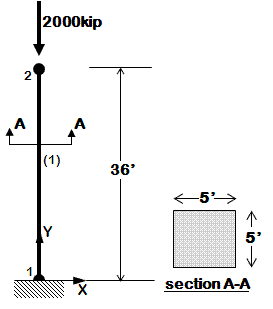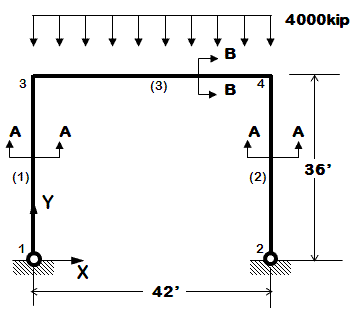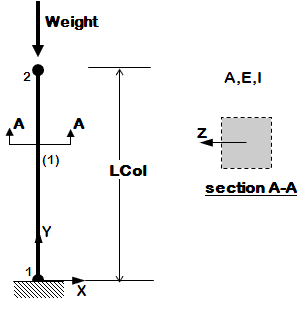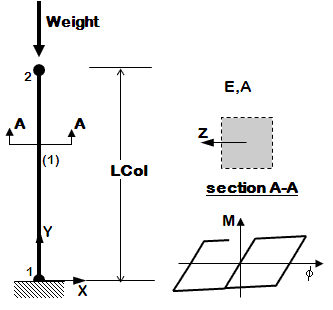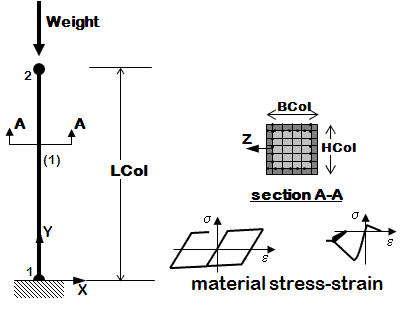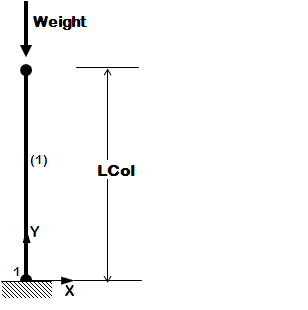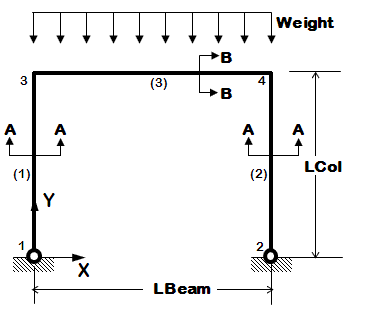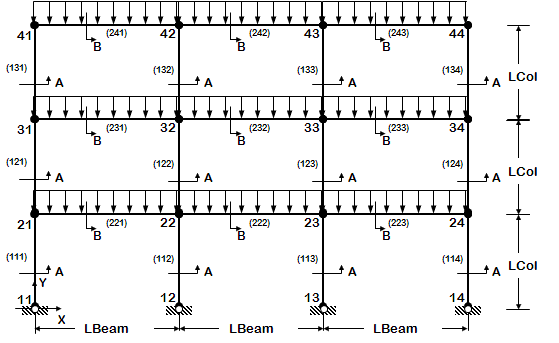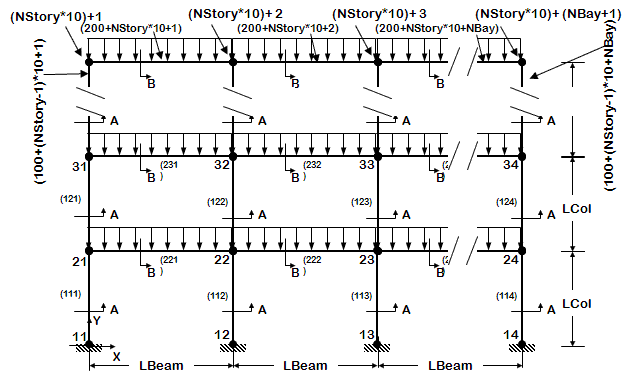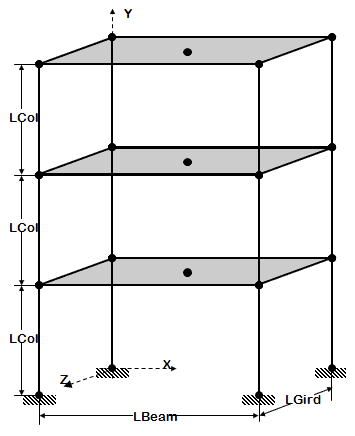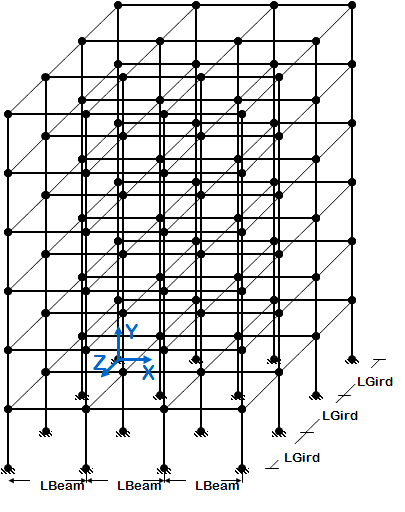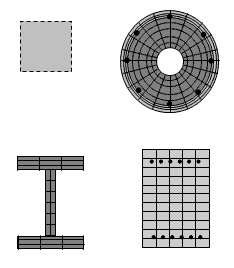OpenSees Examples Manual -- Structural Models & Anlyses: Difference between revisions
No edit summary |
No edit summary |
||
| Line 101: | Line 101: | ||
|} | |} | ||
|} | |} | ||
*[[OpenSees Example 1b. Elastic Portal Frame]] | *<big><strong>[[OpenSees Example 1b. Elastic Portal Frame]]</strong></big> | ||
<!-- SECTION --> | <!-- SECTION --> | ||
{| style="width:100%; vertical-align:top; border:1px solid #red; background:#white;" | {| style="width:100%; vertical-align:top; border:1px solid #red; background:#white;" | ||
| Line 157: | Line 157: | ||
== Simple Nonlinear Analysis Examples == | == Simple Nonlinear Analysis Examples == | ||
*<big><strong>[[OpenSees Example 2a. Elastic Cantilever Column with variables]]</strong></big> | |||
<!-- SECTION --> | <!-- SECTION --> | ||
| Line 207: | Line 208: | ||
|} | |} | ||
|} | |} | ||
*<big><strong>[[OpenSees Example 2b. Nonlinear Cantilever Column: Uniaxial Inelastic Section]]</strong></big> | |||
<!-- SECTION --> | <!-- SECTION --> | ||
{| style="width:100%; vertical-align:top; border:1px solid #red; background:#white;" | {| style="width:100%; vertical-align:top; border:1px solid #red; background:#white;" | ||
| Line 258: | Line 260: | ||
|} | |} | ||
<!-- SECTION --> | <!-- SECTION --> | ||
*<big><strong>[[OpenSees Example 2c. Nonlinear Cantilever Column: Inelastic Uniaxial Materials in Fiber Section ]]</strong></big> | |||
{| style="width:100%; vertical-align:top; border:1px solid #red; background:#white;" | {| style="width:100%; vertical-align:top; border:1px solid #red; background:#white;" | ||
! style="padding:2px" | | ! style="padding:2px" | | ||
| Line 315: | Line 318: | ||
== 2D Structural Modeling & Analysis Examples == | == 2D Structural Modeling & Analysis Examples == | ||
<!-- SECTION --> | <!-- SECTION --> | ||
*<big><strong>[[OpenSees Example 3. Cantilever Column with units]]</strong></big> | |||
| Line 372: | Line 376: | ||
|} | |} | ||
<!-- SECTION --> | <!-- SECTION --> | ||
*<big><strong>[[OpenSees Example 4. Portal Frame]]</strong></big> | |||
{| style="width:100%; vertical-align:top; border:1px solid #red; background:#white;" | {| style="width:100%; vertical-align:top; border:1px solid #red; background:#white;" | ||
! style="padding:2px" | | ! style="padding:2px" | | ||
| Line 429: | Line 434: | ||
|} | |} | ||
<!-- SECTION --> | <!-- SECTION --> | ||
*<big><strong>[[OpenSees Example 5. 2D Frame, 3-story 3-bay, Reinforced-Concrete Section & Steel W-Section]]</strong></big> | |||
{| style="width:100%; vertical-align:top; border:1px solid #red; background:#white;" | {| style="width:100%; vertical-align:top; border:1px solid #red; background:#white;" | ||
! style="padding:2px" | | ! style="padding:2px" | | ||
| Line 487: | Line 493: | ||
|} | |} | ||
<!-- SECTION --> | <!-- SECTION --> | ||
*<big><strong>[[OpenSees Example 6. generic 2D Frame, N-story N-bay, Reinforced-Concrete Section & Steel W-Section]]</strong></big> | |||
{| style="width:100%; vertical-align:top; border:1px solid #red; background:#white;" | {| style="width:100%; vertical-align:top; border:1px solid #red; background:#white;" | ||
! style="padding:2px" | | ! style="padding:2px" | | ||
| Line 550: | Line 557: | ||
== 3D Structural Modeling & Analysis Examples == | == 3D Structural Modeling & Analysis Examples == | ||
<!-- SECTION --> | <!-- SECTION --> | ||
*<big><strong>[[OpenSees Example 7. 3D Frame, 3-story 3-bayX 3-bayZ, Reinforced-Concrete Section & Steel W-Section]]</strong></big> | |||
| Line 611: | Line 619: | ||
|} | |} | ||
<!-- SECTION --> | <!-- SECTION --> | ||
*<big><strong>[[OpenSees Example 8. generic 3D Frame, NStory NBayX NBayZ, Reinforced-Concrete Section & Steel W-Section]]</strong></big> | |||
{| style="width:100%; vertical-align:top; border:1px solid #red; background:#white;" | {| style="width:100%; vertical-align:top; border:1px solid #red; background:#white;" | ||
! style="padding:2px" | | ! style="padding:2px" | | ||
| Line 675: | Line 684: | ||
== Section Modeling And Analysis Examples == | == Section Modeling And Analysis Examples == | ||
<!-- SECTION --> | <!-- SECTION --> | ||
*<big><strong>[[OpenSees Example 9. Build & Analyze a Section Example]]</strong></big> | |||
{| style="width:100%; vertical-align:top; border:1px solid #red; background:#white;" | {| style="width:100%; vertical-align:top; border:1px solid #red; background:#white;" | ||
Revision as of 19:57, 10 November 2009
Introduction
The following examples are listed in order of simplicity.
NOTE: gravity analysis is always included as part of the model building
Process
Each example script does the following: A. Build the model
- model dimensions and degrees-of-freedom
- nodal coordinates
- nodal constraints -- boundary conditions
- nodal masses
- elements and element connectivity
- recorders for output
B. Define & apply gravity load
- nodal or element load
- static-analysis parameters (tolerances & load increments)
- analyze
- hold gravity loads constant
- reset time to zero
C. Define and apply lateral load
- load pattern (nodal loads for static analysis, support ground motion for earthquake)
- lateral-analysis parameters (tolerances & displacement/time increments)
- Static Lateral-Load Analysis
- define the displacement increments and displacement path
- Dynamic Lateral-Load Analysis
- define the input motion and all associated parameters, such as scaling and input type
- define analysis duration and time increment
- define damping
- Static Lateral-Load Analysis
- analyze
Introductory Examples
The objective of Example 1a and Example 1b is to give an overview of input-file format in OpenSees using simple scripts.
These scripts do not take advantage of the Tcl scripting capabilities shown in the later examples. However, they do provide starting a place where the input file is similar to that of more familiar Finite-Element Analysis software. Subsequent examples should be used as the basis for user input files.
|
|
|
|
|
|
|
|
|
|
Simple Nonlinear Analysis Examples
|
|
|
|
|
|
|
|
|
|
|
|
|
|
|
2D Structural Modeling & Analysis Examples
These examples take advantage of the Tcl scripting language starting from simple variable substitutions in the initial examples, to the more advanced techniques of array management and logical expressions (if-then statements). |
|
|
|
|
|
|
|
|
|
|
|
|
|
|
|
|
|
|
|
|
3D Structural Modeling & Analysis Examples
|
|
|
|
|
|
|
|
|
|
Section Modeling And Analysis Examples
|
|
|
|
|
Return to OpenSees User
